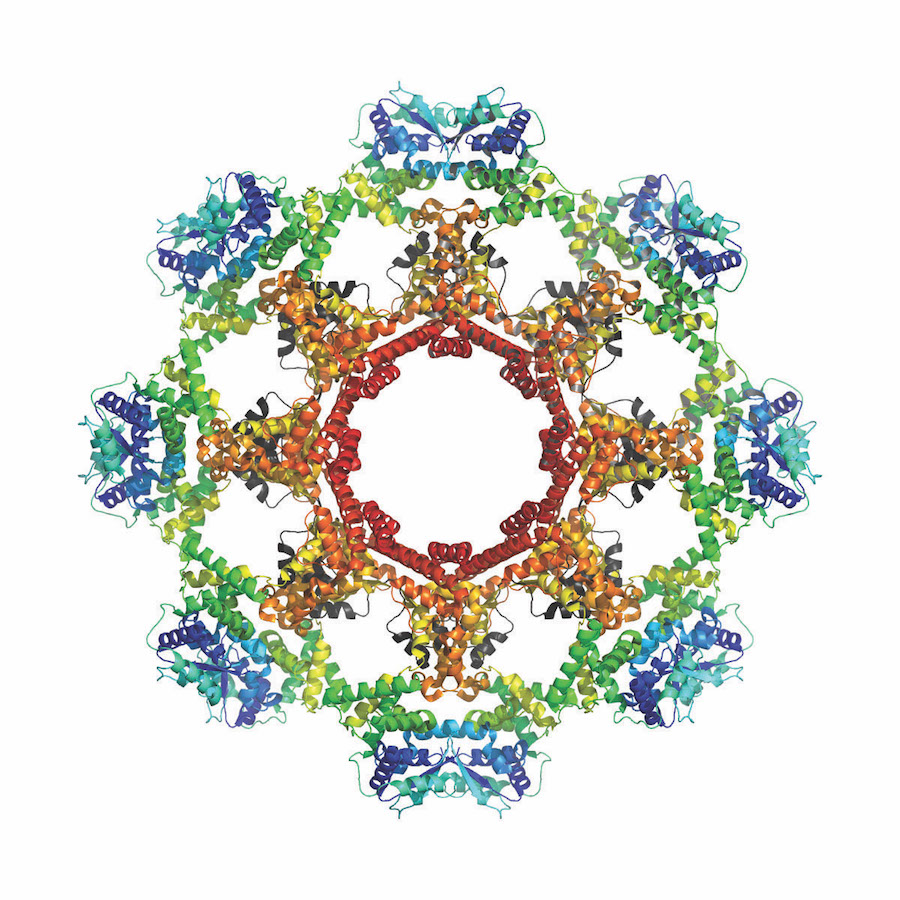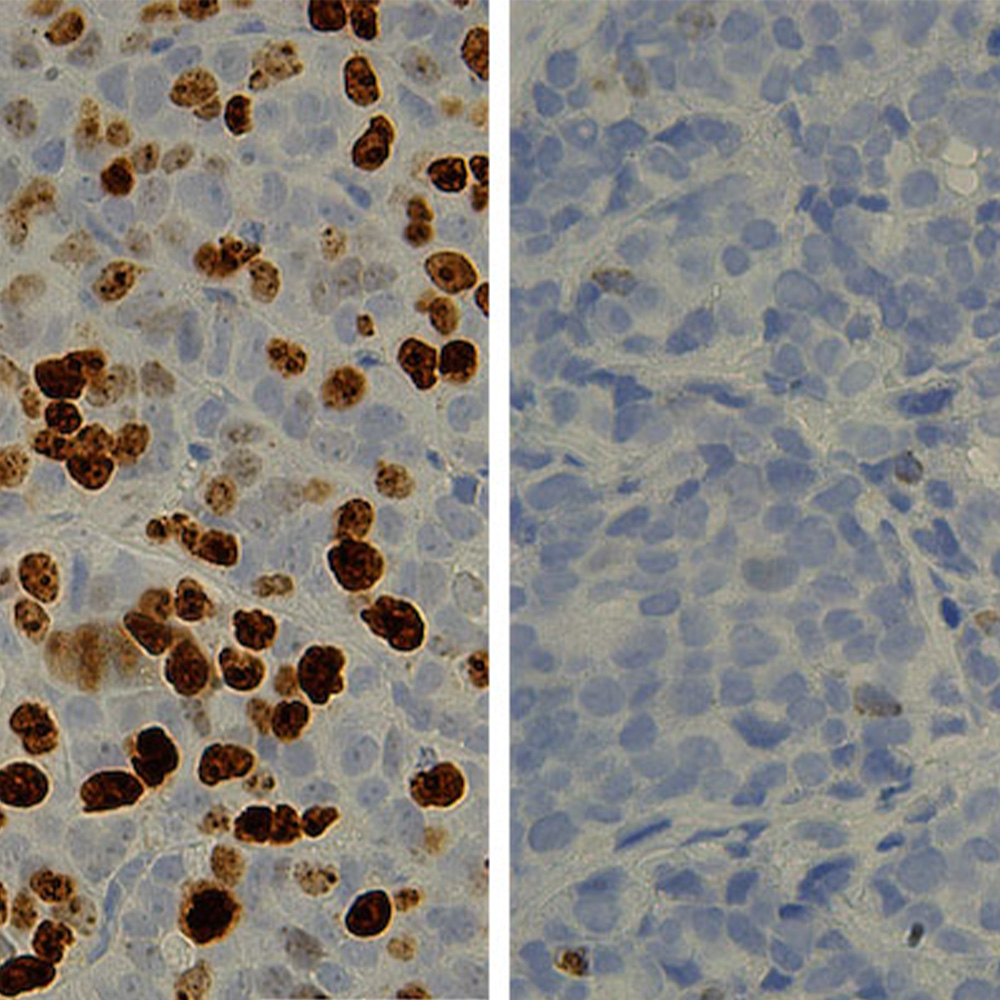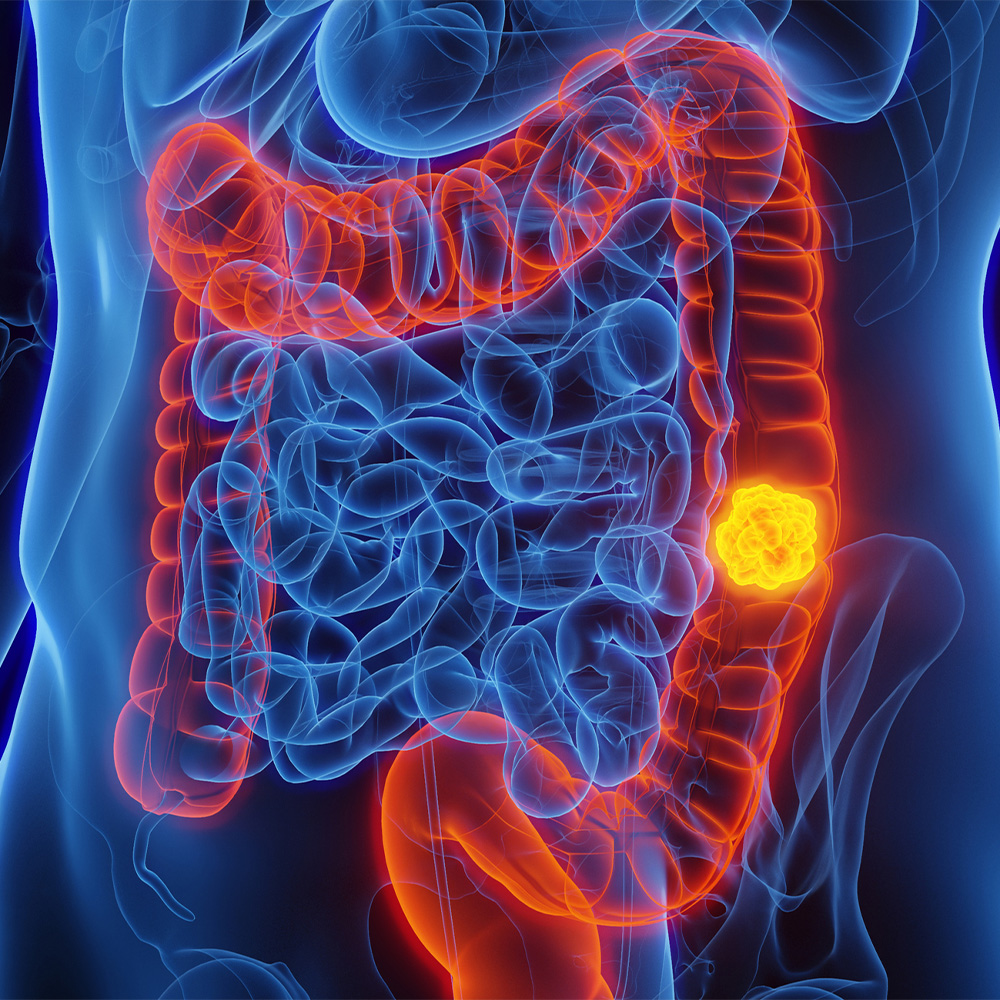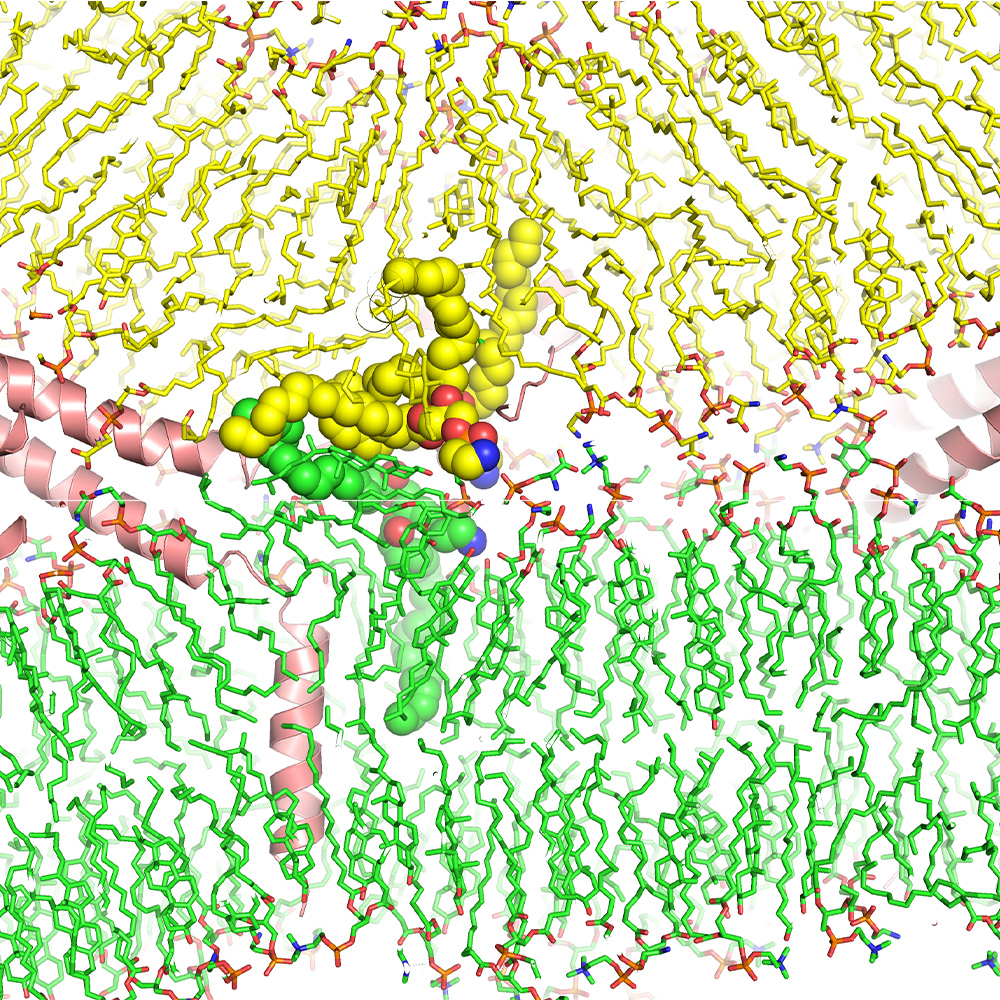Searching for chinks in pathogens' armor

Drug discovery begins with an understanding and analysis of a protein’s microscopic structure. In particular, determining the 3-D atomic structure of proteins helps scientists identify where a pathogen might be vulnerable to assault by drugs or vaccines.
So how is a 3-D structure made? A protein must be cloned, turned on as a gene, and crystallized. Then X-ray diffraction data – defining the location of each of the hundreds or even thousands of atoms to generate 3-D models of the structures – are collected to be analyzed with graphics software.
UT Southwestern’s contribution to these efforts as part of the Center for Structural Genomics of Infectious Diseases involves managing the salvage pathway, meaning scientists design custom methods for determining structures of molecules that resist standard approaches and for which the high potential for drug or vaccine development justifies applying advanced efforts.




